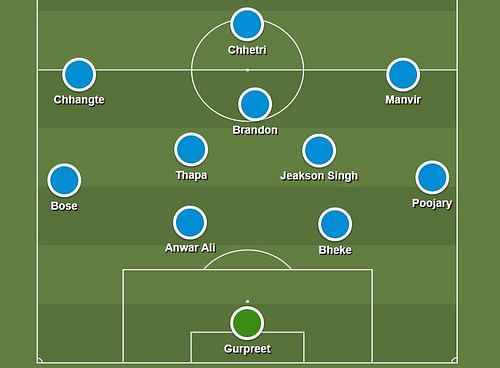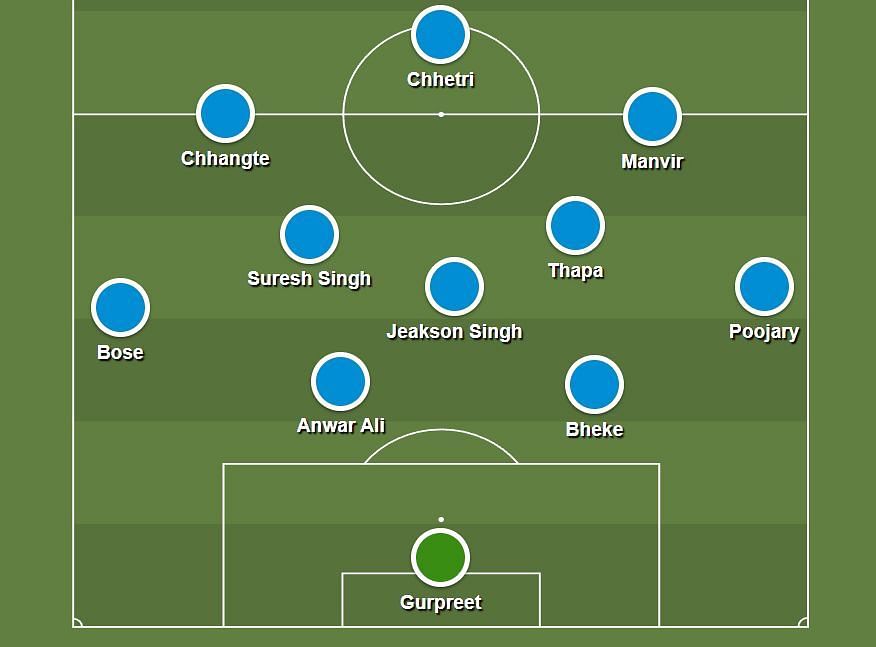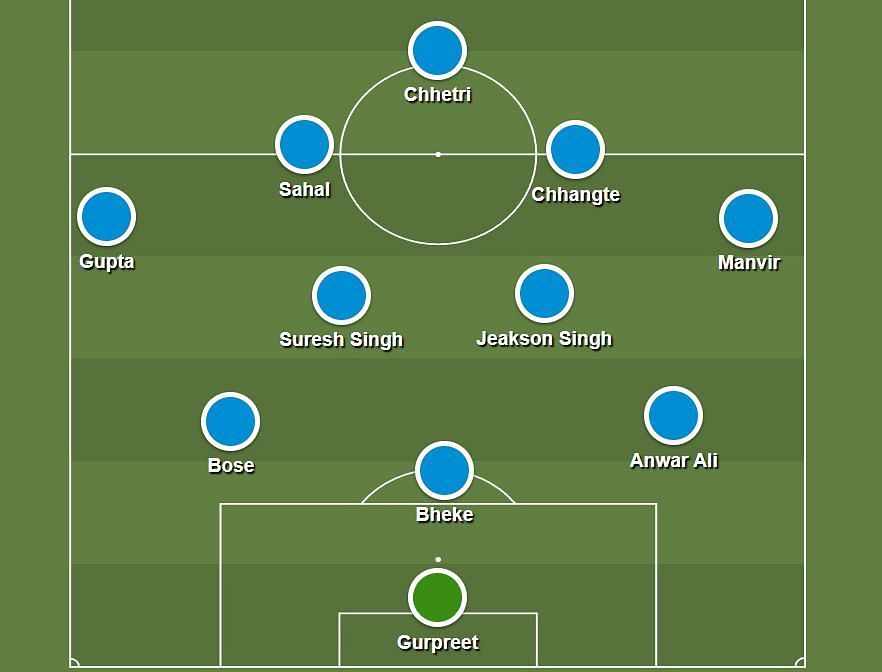
3 potential ways India could lineup against Kuwait in the FIFA World Cup 2026 Qualifiers
History beckons for the Indian men’s team as the penultimate game of the FIFA World Cup 2026 qualifiers approaches. The Blue Tigers will face Kuwait in a potential do-or-die clash that could see them advance to the third round of the qualifiers for the first time in their history.
Adding to the historic significance of this match, Indian skipper Sunil Chhetri is set to don the blue jersey for one final time on June 6 in Kolkata.
India began their campaign with a stunning 1-0 win over Thursday’s opponents back in November. However, since then, they have suffered defeats against Qatar and Afghanistan and played out a goalless draw.
They currently sit second in the table with four points, with Afghanistan level on points and Kuwait just one point behind.
A massive crowd is expected to cheer on the Blue Tigers, so the onus shifts onto the players and head coach Igor Stimac to deliver. Despite unconvincing results and performances in recent times, there is a sense of positivity within the camp, given the month they have had to prepare for this game.
Stimac, who has faced considerable scrutiny for his approach in recent months, will be under the spotlight for his tactical decisions this time around. On that very note, here are three systems that he could potentially utilize against Kuwait.
4-2-3-1 formation
Igor Stimac is likely to stick with this system and set of players for the crucial game. Starting from the back, Rahul Bheke is expected to partner with Anwar Ali at the heart of the defense, and Subhasish Bose will almost certainly replace Akash Mishra at left-back.
With Apuia also ruled out, Anirudh Thapa is likely to get the nod over Suresh Singh Wangjam, thanks to his attack-minded style of play and goal-scoring instincts. Upfront, Manvir Singh, Chhangte, and Chhetri are set to lead the attack, with Fernandes possibly starting over Sahal due to his current form.

In this set-up, Stimac will want his full-backs to push forward while ensuring that the wingers are active in the penalty area to increase the numbers attacking the penalty area.
India will also depend on Chhangte’s individual brilliance from the flanks, as he has been in excellent form, scoring eight goals in his last nine appearances.
The defense, led by the experienced Bheke and Bose in Sandesh Jhingan’s absence, will be crucial. This setup has been Stimac’s preferred choice, so it will be interesting to see if he certainly deviates from this approach.
4-3-3 formation
Igor Stimac has tested this system a few times, especially in the absence of attacking midfielders like Sahal or Brandon Fernandes.
A similar three-man midfield was notably used against Uzbekistan in the Asian Cup, where India struggled in the first half but showed significant improvement in the second half, especially in possession.
With Jeakson Singh back in the lineup, the Blue Tigers will now have a solid base in front of the center-backs. This allows Thapa and Suresh Singh to adopt more box-to-box roles, which play to their strengths.
This system also gives the wingers the freedom to stay forward and hit Kuwait on the break, as the three midfielders have the ability to cover plenty of ground and handle defensive duties.

In terms of balance, deploying three physically strong midfielders will only improve India’s defensive structure. However, it may also impact their attacking potential, as will they lack a creative midfielder with a knack for killer passes.
3-4-3 formation
Stimac has not traditionally employed a back three structure, but given the current crop of players, this could be an ideal setup for the Blue Tigers to counter Kuwait’s threat from the flanks.
Jay Gupta and Amey Ranawade, two very attack-minded full-backs, have had stellar seasons with FC Goa and Odisha FC, respectively. Gupta was the ISL’s top chance creator among defenders while Ranawade created 16 chances and provided six assists.
Stimac could also use Manvir Singh as a wing-back, a role in which he thrived under Antonio Habas at Mohun Bagan SG. He scored three goals and further assisted seven, with his work rate also being a crucial factor in Bagan’s title win.

These options provide India with a solid base in defense and midfield while enabling them to create wide overloads to deliver crosses and consistently attack the box - an aspect that has been lacking in recent months.